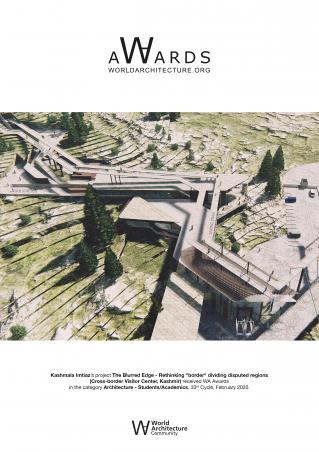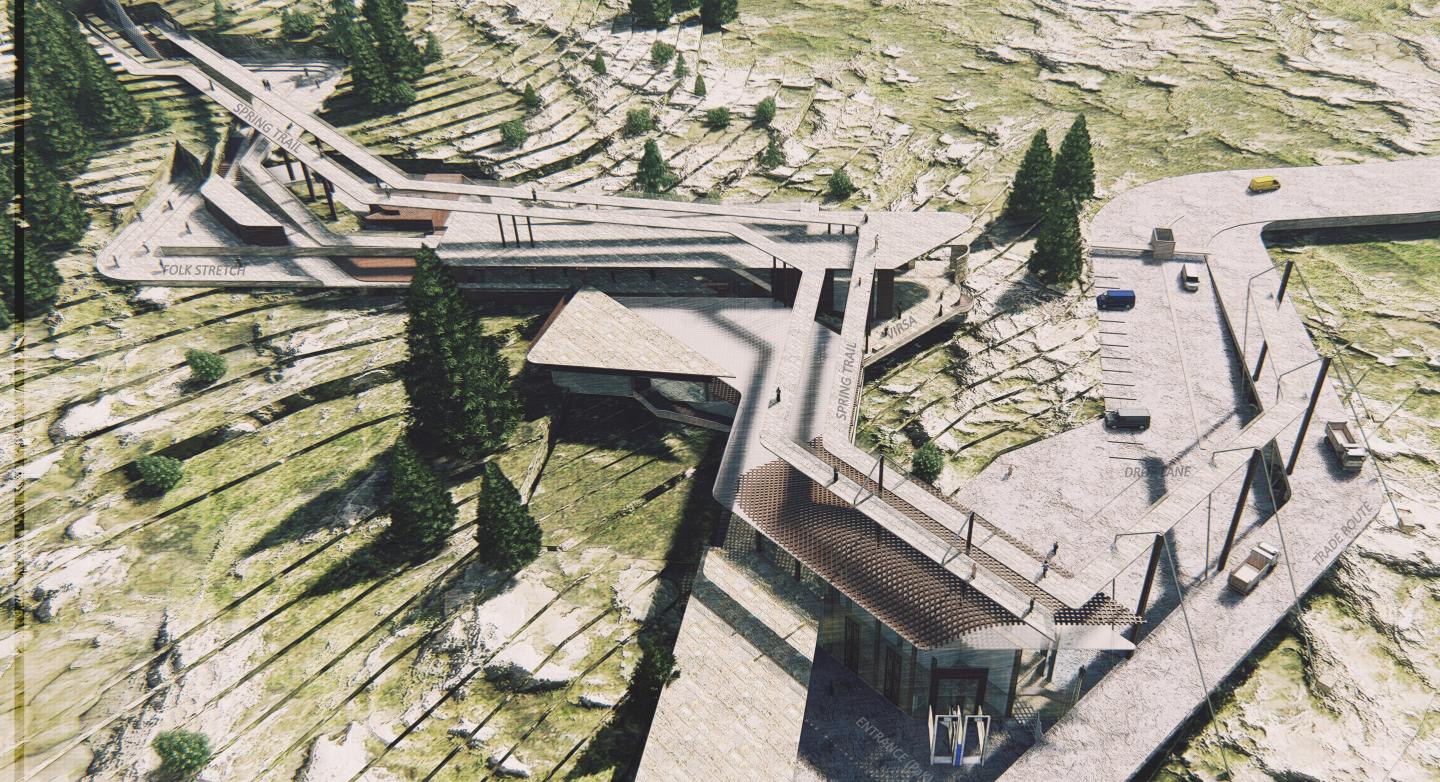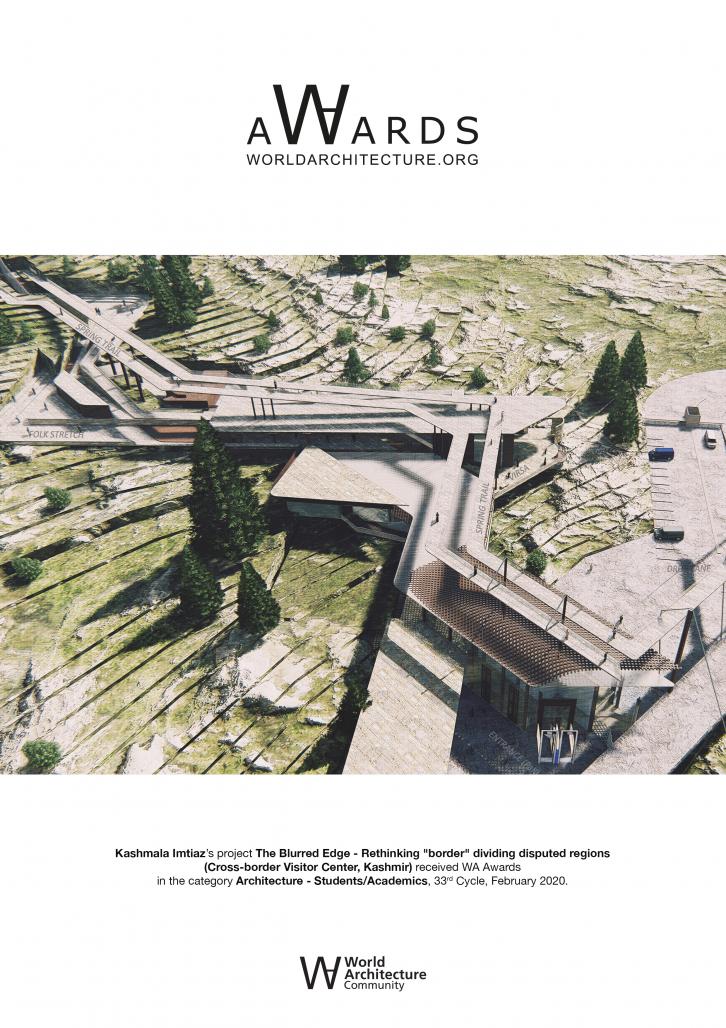This project is centered on the Line of Control (LOC) between Indian and Pakistan Administered Kashmir, which is a temporary boundary separating the two regions since 1948. Declared a “ceasefire line” in 1948, the LOC is purely virtual in nature, its demarcation did not consider local demographics and led to the faulty division of families and locals living right across each other.
The central aim of the thesis is to emphasize on the needs of the local population of both states; re-imagine the physical rigidity of this border, going beyond the elements of war and conflict that has mired the region till now. It involves reinterpretation of the physical border, turning it into a a mutual space for locals of both territories.
The logic behind creating a mutual space on borderland is to provide locals a sense of belonging without any divisions or barriers holding them apart. Border de-differentiated into a space where the locals of either side would come, reunite, eat, learn and celebrate together. Catering to their communal needs, this will be a platform where they can express their collective identity.
This is achieved by designing a cross border visitor center for locals, thus, turning a “no ownership” land to a “collective” ownership land. It will be based in the crossing point region of LOC (Tatrinote-Poonch Crossing Point). The aim is to present this as a programmatic prototype that can be utilized as a model to reinterpret the Line of Control as a whole.
Apart from reintegration, the center will offer a range of social spaces that will instigate feelings of “collective nostalgia” among the visitors, since process of reunion directly corresponds to the creation of a collective nostalgia. Timelessness, spatial dichotomy and in-group binding are certain qualities of nostalgia involved within the project to generate a range of programs. The programs are categorized into five basic parameters; being together, celebrating, eating, learning and contemplating. All the architectural spaces under the proposed project are conceived to be based on these categories. It also involves the creation of a subjective narrative through the incorporation of certain elements (native craft, music, food, activity etc.) which will induce a sense of belonging and common identity.
Eventually, LOC will morph into a “Cross-border Visitors Center” and will serve as a collective space for the locale, catering to their first and foremost need of being together.
2019
0000
Kashmala Imtiaz (Thesis Project)
The Blurred Edge - Rethinking "border" dividing disputed regions (Cross-border Visitor Center, Kashmir) by Kashmala Imtiaz in Pakistan won the WA Award Cycle 33. Please find below the WA Award poster for this project.

Downloaded 248 times.
Favorited 2 times









